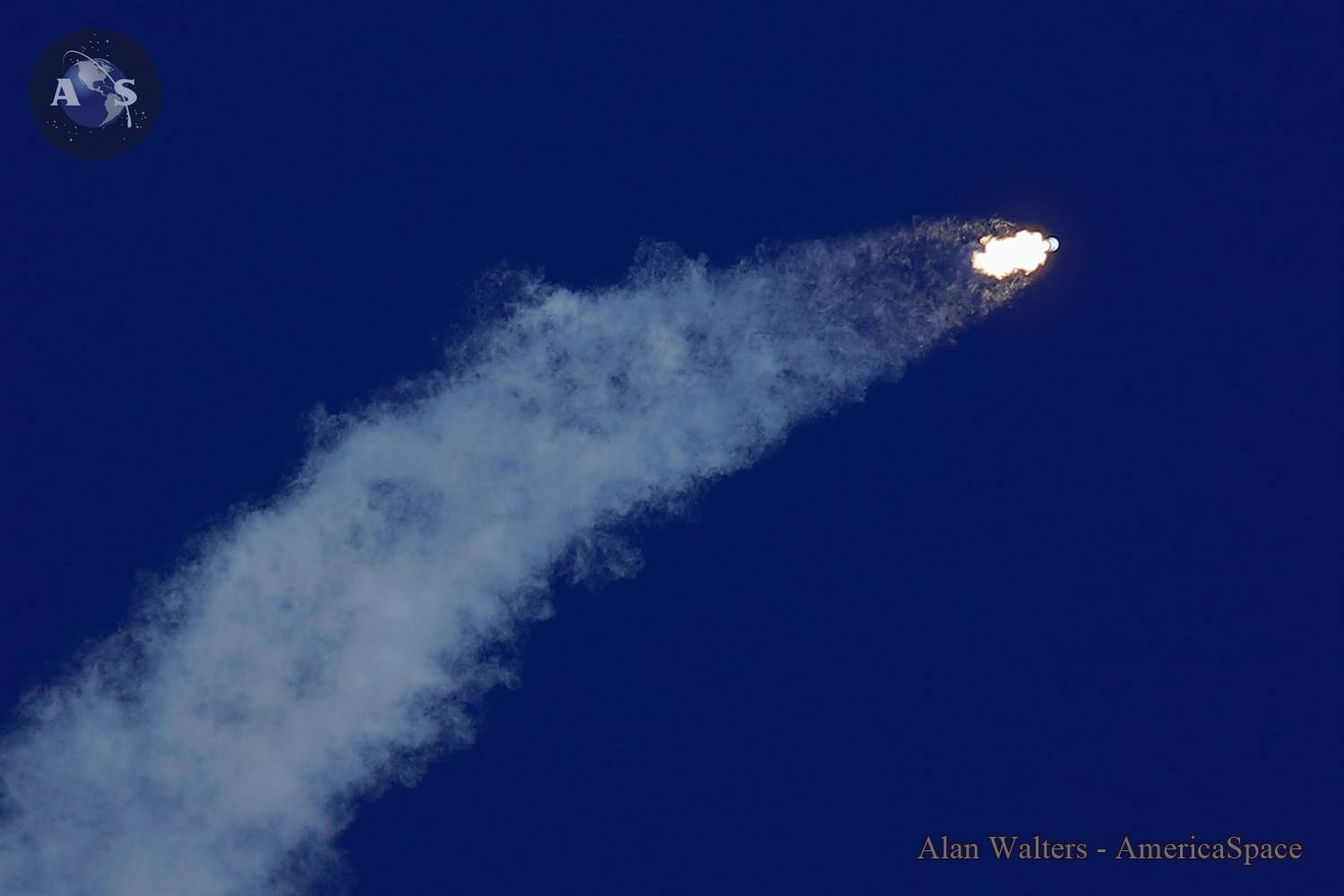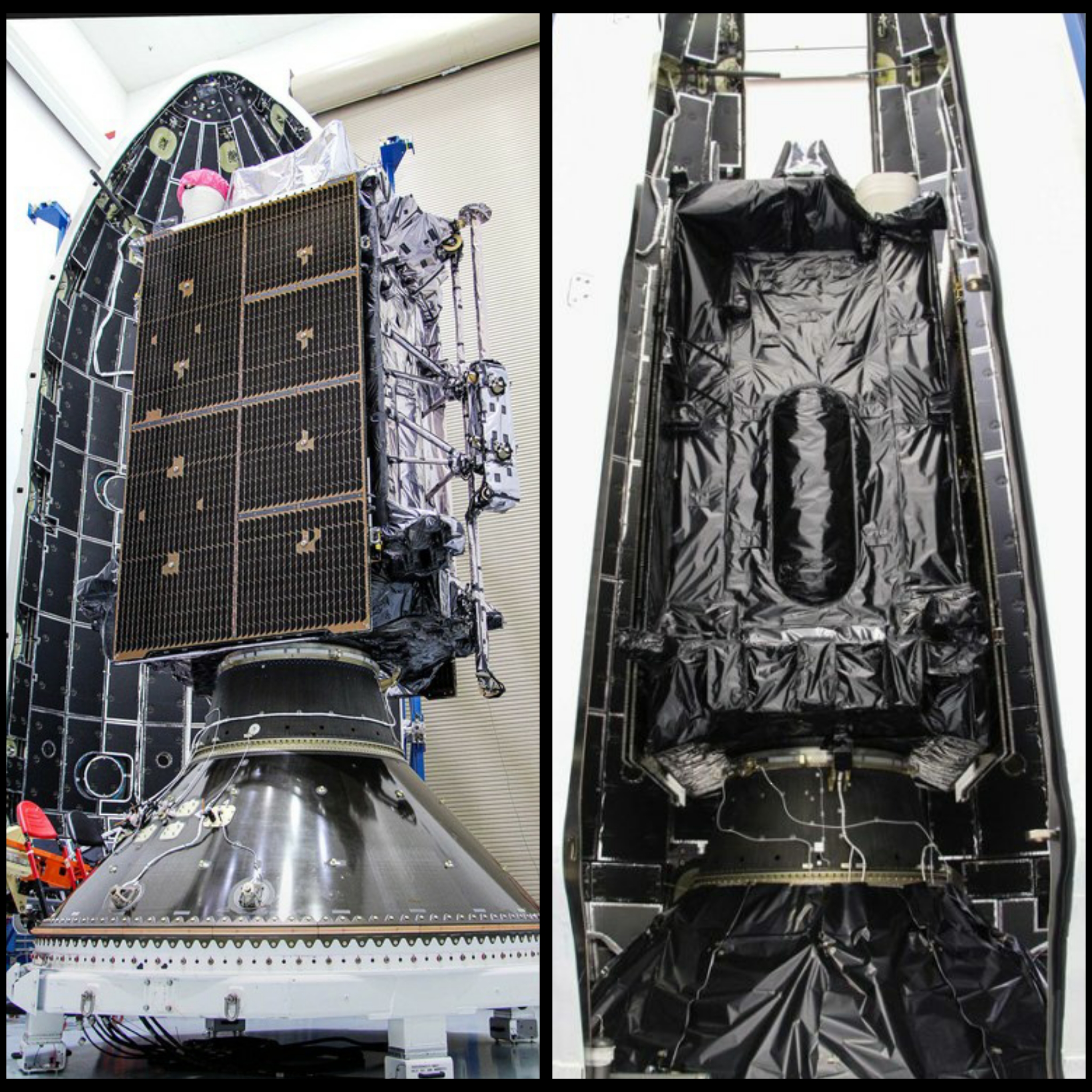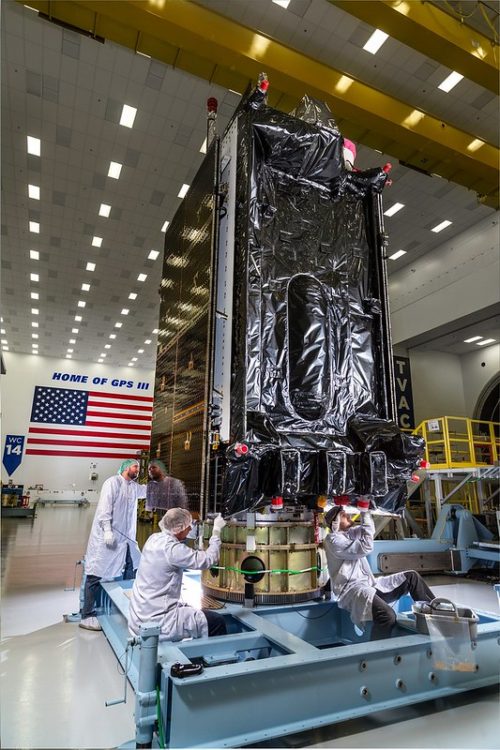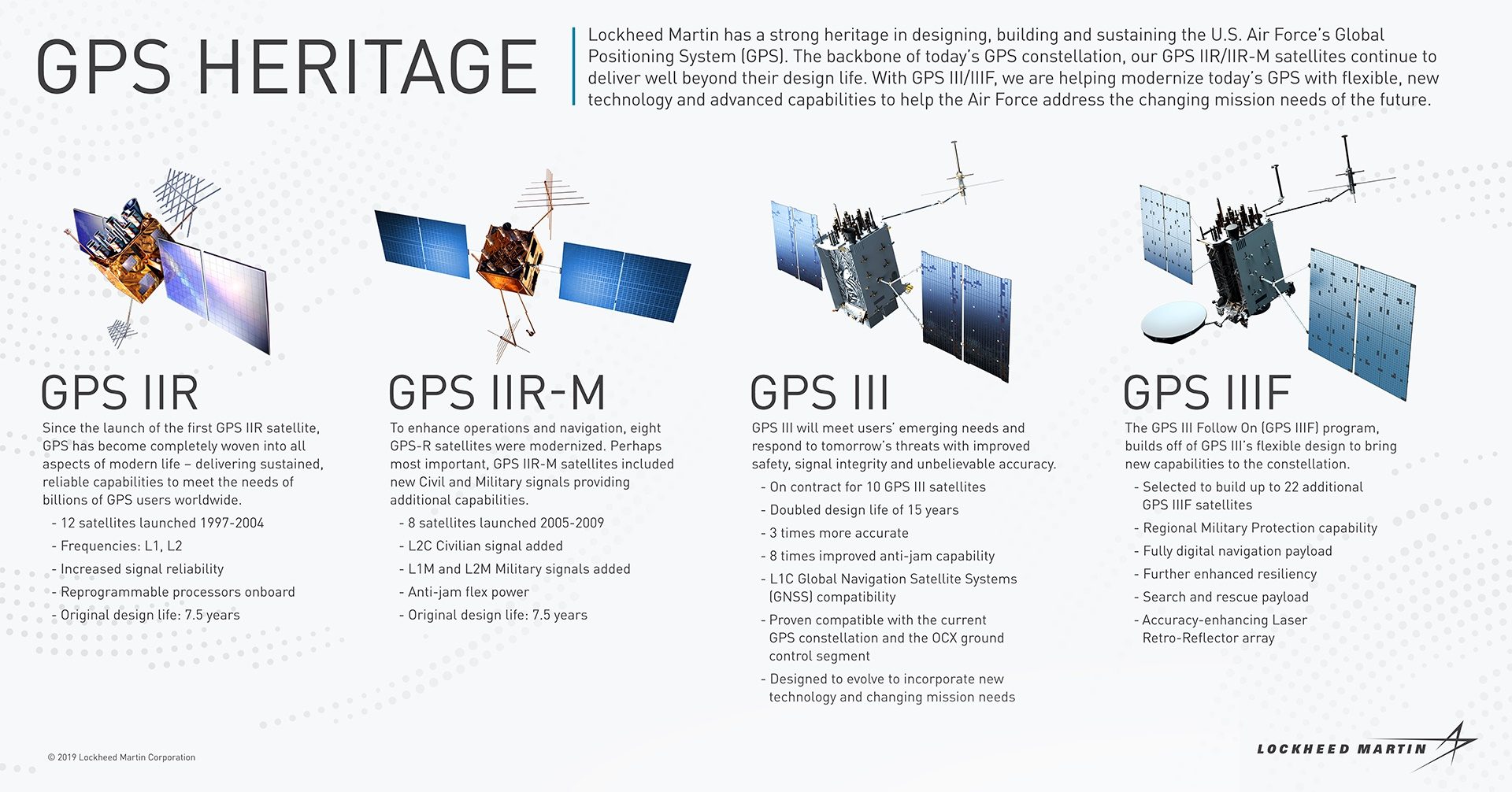
Hopes of seeing four Falcon 9 rockets launch within a single calendar month have evaporated, following SpaceX’s decision to postpone its Starlink/BlackSky rideshare flight by a few days. This puts a high-profile Air Force mission to launch the third Global Positioning System (GPS) Block III timing and navigation satellite in pole position to wrap up an action-packed June.
Liftoff is timed for 3:55 p.m. EDT on Tuesday. And for only the second time in 2020, a shiny new Falcon 9 will be employed to deliver the 8,500-pound (3,900 kg) GPS III-03 satellite into a Medium Earth Orbit (MEO) at a mean altitude of 12,550 miles (20,200 km). The launch had previously been delayed since late April in response to the worldwide COVID-19 coronavirus pandemic.
Follow our GPS III-03 LAUNCH TRACKER for updates and live coverage on launch day!
It has been a dramatic half-year for SpaceX, which flew ten missions between 6 January and 13 June, delivering over 400 Starlink internet communications satellites into low-Earth orbit, lofting the CRS-20 Dragon cargo ship to the International Space Station (ISS) and staging a dramatic In-Flight Abort Test of Crew Dragon, ahead of the first launch of U.S. astronauts, atop a U.S. rocket, and from U.S. soil, since the end of the Space Shuttle era.
And although SpaceX has flown three Falcon 9s in a single calendar month several times before, launching four times—essentially once every week—posed a substantial challenge which the Hawthorne, Calif.-based company almost achieved. Two back-to-back Starlink missions on 3 June and 13 June were expected to be followed by another on the 26th and GPS III-03 to close out the month on the 30th.
In readiness for these flights, the previously-flown B1051 core for the Starlink/BlackSky mission underwent its customary Static Fire Test on historic Pad 39A at the Kennedy Space Center (KSC) on 24 June, and the sparkling-new B1060 core for GPS III-03 did likewise on neighboring Space Launch Complex (SLC)-40 at Cape Canaveral Air Force Station just 24 hours later on 25 June.
With the weather outlook for the 26th showing increased promise, peaking at a 70-percent probability of acceptable conditions, it seemed that June would go SpaceX’s way. It therefore came as a surprise on Friday afternoon, three hours before the scheduled launch, when SpaceX announced that a scrub had been declared. “Standing down from today’s Starlink mission; team needed additional time for pre-launch checkouts,” it was noted, “but Falcon 9 and the satellites are healthy.”
As such, first-time-flyer B1060—looking particularly shiny and without a trace of the sootiness which characterizes the lowermost halves of its reflown sisters—is now “No. 1 on the runway” for its important Air Force mission, scheduled to fly at 3:55 p.m. EDT Tuesday. The “launch window” lasts just 15 minutes. A landing of the B1060 core on the Autonomous Spaceport Drone Ship (ASDS), “Just Read the Instructions”, is anticipated at the end of Tuesday’s mission.
GPS III-03 is part of a next-generation constellation of global positioning, velocity and timing satellites bound for Medium Earth Orbit (MEO) at a mean altitude of 12,550 miles (20,200 km). Building upon a GPS Navstar heritage which dates back to the 1970s, Block III got underway almost two decades ago and the Air Force awarded Lockheed Martin a $1.4 billion contract in May 2008 to develop the first two Block III satellites in what will eventually comprise a 32-satellite network, with the first launch initially targeted for 2014. However, payload difficulties would ultimately push the program’s maiden flight back by almost five years and it did not launch until December 2018.
In the meantime, contracts to build GPS III-03 were awarded to Lockheed Martin in January 2012. The giant satellite was assembled in the company’s GPS III Processing Facility, near Denver, Colo., and its system module, navigation payload and propulsion core were integrated in August 2017. This set the stage for a punishing series of environmental and Thermal Vacuum Chamber (TVAC) tests to evaluate its ability to withstand the high-vacuum and high-radiation conditions of MEO. These were completed by the second half of 2018.
Finally, in February 2020 the satellite was shipped from Buckley Air Force Base in Aurora, Colo., to Cape Canaveral Air Force Station, Fla., aboard an Air Force C-17 Globemaster III airlifter, for final processing ahead of its scheduled 29 April launch atop a Falcon 9.
SpaceX had earlier been selected in March 2017 to fly GPS III-03 for a fee of $96.5 million. The Air Force reportedly insisted that none of its payloads should ride previously-flown Falcon 9 cores and the brand-new B1060 booster underwent a test firing of its nine Merlin 1D+ first-stage engines in McGregor, Texas, in February 2020.

However, launch schedules do not always cater for unforeseen circumstances on Earth. The COVID-19 coronavirus pandemic and its potential impact both on the launch crews and early-orbit operators prompted a decision to postpone the launch until the end of June. According to Lt. Gen. John F. Thomspon, program executive officer for space and commander of the Space and Missile Systems Center (SMC) at Los Angeles Air Force Base in Los Angeles, Calif., the decision was taken because the existing GPS on-orbit system was strong enough to absorb the delay. “Protecting our people,” he said, “is just as important as cost, schedule and performance.”
On 21 June, GPS III-03 was encapsulated inside its bulbous payload fairing to await the completion of B1060’s Static Fire Test on SLC-40. Upon the satisfactory completion of the test last Thursday, the booster was returned to the nearby Horizontal Integration Facility (HIF) for the installation of its payload. This would clear the way for rollout to the pad for launch.
The weather outlook for Tuesday’s opening launch attempt looks iffy, with only a 40-percent probability of acceptable conditions for the 15-minute “window”, which extends from 3:55 p.m. through 4:10 p.m. EDT. A low-pressure area is expected to move into the Eastern Seaboard on Tuesday, creating stronger low-level southwesterly flows and hindering the inland progression of the sea-breeze. This will keep storm activity much closer to the Space Coast.

“This more unfavorable pattern will continue with more storm coverage each day,” noted the 45th Weather Squadron at Patrick Air Force Base in its L-2 update on Sunday, “until the low-pressure area moves away to the northeast.” Launch teams are particularly concerned by the chance of possibility of violating the Cumulus Cloud Rule, the Anvil Cloud Rule and the Surface Electric Field Rule associated with anticipated Tuesday-afternoon convection to the west of the Spaceport. This is expected to be particularly apparent towards the end and after the closure of Tuesday’s window.
Based upon Lockheed Martin’s tried-and-true A2100 “bus”, whose modular framework can support 15 kilowatts of electricity via high-efficiency solar cells, radiation-cooled traveling-wave-tube assemblies and improved heat-pipe design, each GPS Block III weighs around 8,500 pounds (3,900 kg). Its 15-year operational life span also represents a 25-percent leap over the earlier GPS IIF satellites. And with 500 times the transmitting power of earlier GPS systems, Block III benefits from improved navigational warfare abilities, with three times greater accuracy and eight times enhanced anti-jamming functionality.
This enables the satellites to shut off GPS service to limited geographical locations, whilst maintaining uninterrupted provision for U.S. and allied forces. Block III features a cross-linked command and control architecture, which allows the entire constellation to be updated from a single ground station. Furthermore, the satellites showcase a spot-beam capability for enhanced military (“M-Code”) coverage and increased resistance to hostil jamming. All told, these enhancements are expected to produce improved accuracy and assured availability for military and civilian users worldwide.

In keeping with tradition, GPS III-03 is named in honor of Christopher Columbus, the 15th-century explorer and navigator whose pioneering voyages to the Americas played an enormous role in opening up the New World to Western consciousness for the first time. The two previous Block III satellites—GPS III-01, also flown aboard a Falcon 9 in December 2018, and GPS III-02, which rode the swansong voyage of the United Launch Alliance (ULA) Delta IV Medium last August—were named respectively for “Age of Sail” explorers Amerigo Vespucci and Ferdinand Magellan.
.
.
FOLLOW AmericaSpace on Facebook and Twitter!
.
.
Missions » GPS » GPS 3 »




